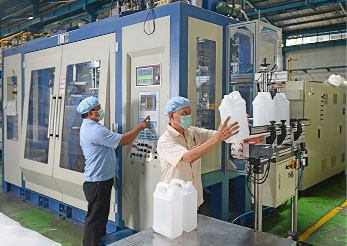 Back to Top
Back to Top
Hotline 085218084493
085218084493
Hotline 085218084493
085218084493
Category
Tips
What are food grade materials and why are they important for food packaging?
Articles & Blogs Category

Food grade materials are materials specifically designed for direct contact with food or drink. These ingredients must meet strict safety standards set by regulatory agencies such as the FDA (Food and Drug Administration) in the United States or similar agencies in many other countries. Examples of food grade materials include stainless steel, HDPE (high-density polyethylene), glass, and silicon which do not contain toxic substances that can leach into food. The safety of food grade materials is important for food packaging because it can prevent contamination that can endanger consumer health. In addition, this material is designed not to change the taste or aroma of food, maintain cleanliness and maintain food quality for the desired period of time. Choosing the right food grade material is also closely related to ease of production and cost. Food packaging manufacturers must consider the physical and chemical properties of materials, such as durability, resistance to extreme temperatures, cleanliness, and safety for long-term use. In a modern industry that increasingly prioritizes food safety and increasing consumer awareness, the use of food grade materials is not an option but a necessity to ensure food packaging products are safe and comply with applicable regulations. If you are looking for plastic jerrycans with the best quality, then Kadujaya Perkasa is the right choice. Kadujaya Perkasa sells jerry cans with superior quality. Kadujaya Perkasa is a jerrycan factory, HDPE plastic factory, blow moulding factory, and HDPE jerrycan factory that always provides the best products for consumers.
If you're looking to buy jerry cans in Surabaya, buy jerry cans in Jakarta, buy jerry cans in Bandung, buy jerry cans in Banten, or buy plastic bottles, just trust Kadujaya Perkasa
Other Articles & Blogs
The Role of Used Jerry Cans in Industry: Resource Optimization and Plastic Waste Reduction
 Back to Top
Back to Top